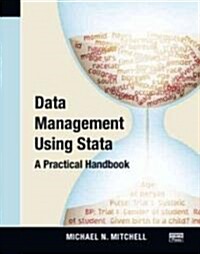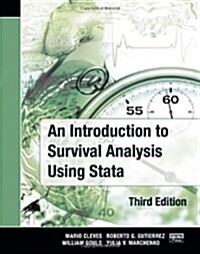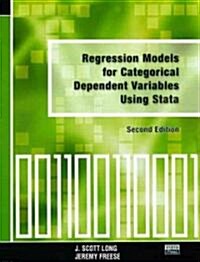
Microeconometrics using Stata
- 발행사항
- College Station, Tex:,Stata Press,,2010
- 형태사항
- xlii, 706 p. : ill; 24cm
- ISBN
- 9781597180733
- 청구기호
- 413.8 C182m
- 서지주기
- Includes bibliographical references (p. [679]-686) and indexes
소장정보
| 위치 | 등록번호 | 청구기호 / 출력 | 상태 | 반납예정일 |
|---|---|---|---|---|
이용 가능 (1) | ||||
| 1자료실 | 00015092 | 대출가능 | - | |
- 등록번호
- 00015092
- 상태/반납예정일
- 대출가능
- -
- 위치/청구기호(출력)
- 1자료실
책 소개
A complete and up-to-date survey of microeconometric methods available in Stata, Microeconometrics Using Stata, Revised Edition is an outstanding introduction to microeconometrics and how to execute microeconometric research using Stata. It covers topics left out of most microeconometrics textbooks and omitted from basic introductions to Stata.
This revised edition has been updated to reflect the new features available in Stata 11 that are useful to microeconomists. Instead of using mfx and the user-written margeff commands, the authors employ the new margins command, emphasizing both marginal effects at the means and average marginal effects. They also replace the xi command with factor variables, which allow you to specify indicator variables and interaction effects. Along with several new examples, this edition presents the new gmm command for generalized method of moments and nonlinear instrumental-variables estimation. In addition, the chapter on maximum likelihood estimation incorporates enhancements made to ml in Stata 11.
Throughout the book, the authors use simulation methods to illustrate features of the estimators and tests described and provide an in-depth Stata example for each topic discussed. They also show how to use Stata’s programming features to implement methods for which Stata does not have a specific command. The unique combination of topics, intuitive introductions to methods, and detailed illustrations of Stata examples make this book an invaluable, hands-on addition to the library of anyone who uses microeconometric methods.
목차
Stata Basics
Interactive use
Documentation
Command syntax and operators
Do-files and log files
Scalars and matrices
Using results from Stata commands
Global and local macros
Looping commands
Some useful commands
Template do-file
User-written commands
Data Management and Graphics
Introduction
Types of data
Inputting data
Data management
Manipulating datasets
Graphical display of data
Linear Regression Basics
Introduction
Data and data summary
Regression in levels and logs
Basic regression analysis
Specification analysis
Prediction
Sampling weights
OLS using Mata
Simulation
Introduction
Pseudorandom-number generators: Introduction
Distribution of the sample mean
Pseudorandom-number generators: Further details
Computing integrals
Simulation for regression: Introduction
GLS Regression
Introduction
GLS and FGLS regression
Modeling heteroskedastic data
System of linear regressions
Survey data: Weighting, clustering, and stratification
Linear Instrumental-Variables Regression
Introduction
IV estimation
IV example
Weak instruments
Better inference with weak instruments
3SLS systems estimation
Quantile Regression
Introduction
QR
QR for medical expenditures data
QR for generated heteroskedastic data
QR for count data
Linear Panel-Data Models: Basics
Introduction
Panel-data methods overview
Panel-data summary
Pooled or population-averaged estimators
Within estimator
Between estimator
RE estimator
Comparison of estimators
First-difference estimator
Long panels
Panel-data management
Linear Panel-Data Models: Extensions
Introduction
Panel IV estimation
Hausman?Taylor estimator
Arellano?Bond estimator
Mixed linear models
Clustered data
Nonlinear Regression Methods
Introduction
Nonlinear example: Doctor visits
Nonlinear regression methods
Different estimates of the VCE
Prediction
Marginal effects
Model diagnostics
Nonlinear Optimization Methods
Introduction
Newton?Raphson method
Gradient methods
The ml command: lf method
Checking the program
The ml command: d0, d1, d2, lf0, lf1, and lf2 methods
The Mata optimize() function
Generalized method of moments
Testing Methods
Introduction
Critical values and p-values
Wald tests and confidence intervals
Likelihood-ratio tests
Lagrange multiplier test (or score test)
Test size and power
Specification tests
Bootstrap Methods
Introduction
Bootstrap methods
Bootstrap pairs using the vce(bootstrap) option
Bootstrap pairs using the bootstrap command
Bootstraps with asymptotic refinement
Bootstrap pairs using bsample and simulate
Alternative resampling schemes
The jackknife
Binary Outcome Models
Introduction
Some parametric models
Estimation
Example
Hypothesis and specification tests
Goodness of fit and prediction
Marginal effects
Endogenous regressors
Grouped data
Multinomial Models
Introduction
Multinomial models overview
Multinomial example: Choice of fishing mode
Multinomial logit model
Conditional logit model
Nested logit model
Multinomial probit model
Random-parameters logit
Ordered outcome models
Multivariate outcomes
Tobit and Selection Models
Introduction
Tobit model
Tobit model example
Tobit for lognormal data
Two-part model in logs
Selection model
Prediction from models with outcome in logs
Count-Data Models
Introduction
Features of count data
Empirical example 1
Empirical example 2
Models with endogenous regressors
Nonlinear Panel Models
Introduction
Nonlinear panel-data overview
Nonlinear panel-data example
Binary outcome models
Tobit model
Count-data models
Appendix A: Programming in Stata
Appendix B: Mata
Glossary
References
Author Index
Subject Index
Stata resources and Exercises appear at the end of each chapter.





